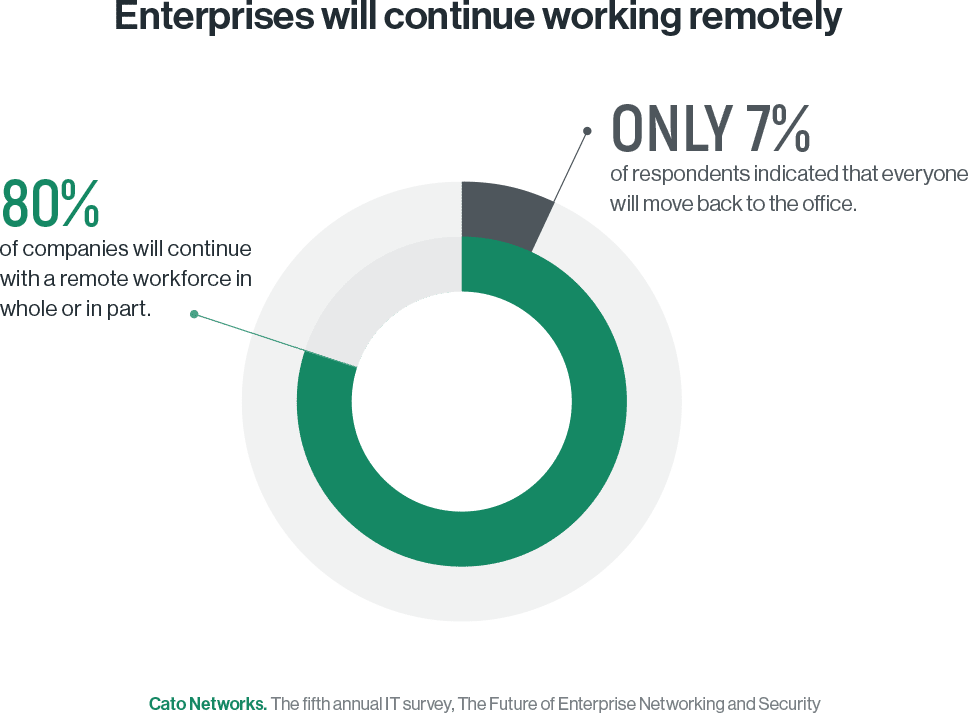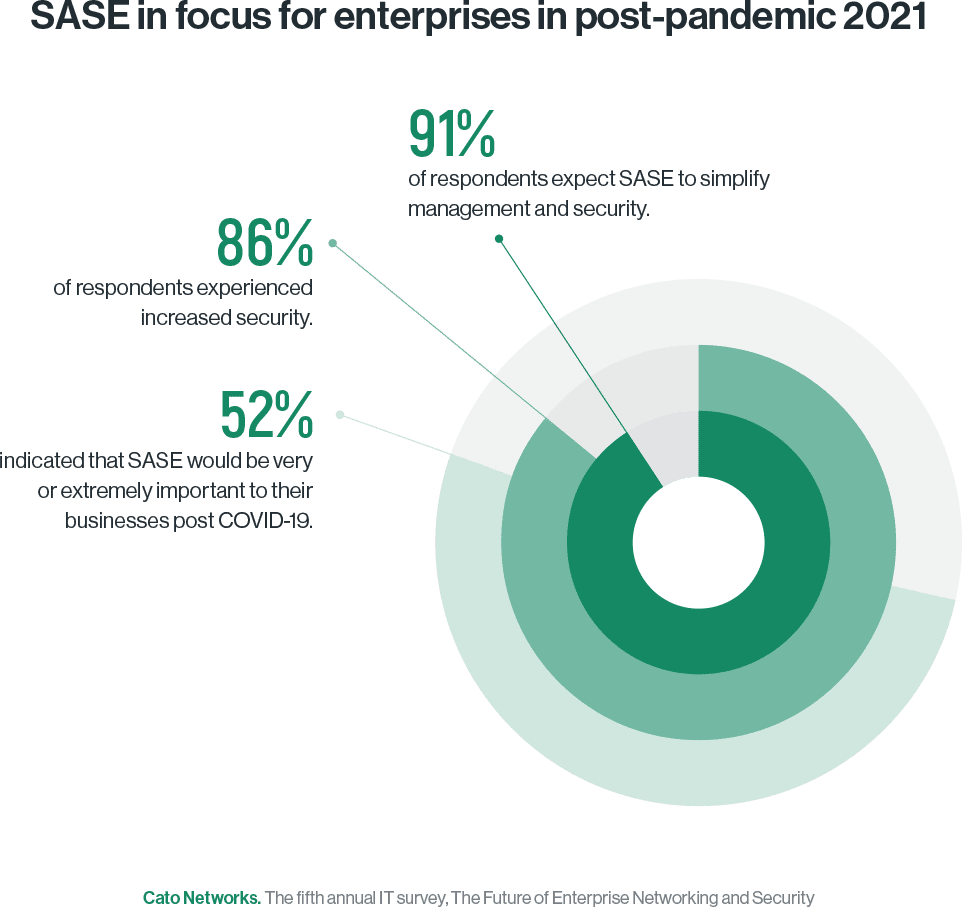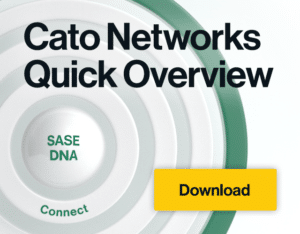Legacy Security Architectures Threaten to Disrupt the Remote Workforce, Finds Cato Networks Survey
Annual survey of 2,376 IT leaders finds network security of prime concern as most companies continue with work-from-home policies
TEL AVIV, Israel, January 19, 2021 — Cato Networks, the provider of the world’s first SASE platform, released the findings of its fifth annual IT survey, The Future of Enterprise Networking and Security: Are You Ready for the Next Leap? With 2,376 IT leaders participating, the survey provides detailed insight into how IT organizations responded to the pandemic and their plans for 2021.

Protecting the remote workforce will be enterprises’ prime focus in 2021. IT teams struggled in the early days of the pandemic, rushing to meet the urgent need for widespread remote access. Connecting users often came at the expense of other factors, such as security, performance, and management. As most respondents (81%) expect to continue working-from-home (WFH), 2021 will see enterprises address those other areas, evolving their remote access architectures to protect the remote workforce without compromising on the user experience.
Writes Gartner, “The abrupt surge in remote work has made secure remote access a priority, bringing back to the forefront BYOPC and VPNs for the short term, and emphasizing on SASE and ZTNA for the long term.” 1
“The true test for any enterprise network is how easily it accommodates the unexpected. The right architecture helps IT avoid spending long hours and significant budget responding to a sudden shift in business requirements,” says Shlomo Kramer, CEO and co-founder of Cato Networks. “A true SASE platform delivers global, cloud-scale networking and security to dynamically adapt to whatever comes next.”
Survey Highlights
- Enterprises will continue working remotely: Only 7 percent of respondents indicated that everyone will move back to the office. More than half (80%) indicated their companies will continue with a remote workforce in whole or in part.
- Securing the remote workforce is proving challenging: Enforcing corporate security policies on remote users was the second most common security challenge (58% of respondents). 57% of respondents indicated they lacked the time and resources to implement recognized security best practices. Boosting remote access performance remains the most popular use case for 2021 (47% of respondents).
- SASE in focus for enterprises in post-pandemic 2021: 91% of respondents expect SASE to simplify management and security. Half of respondents (52%) indicated that SASE would be very or extremely important to their businesses post COVID-19. Of those who’ve already adopted SASE, 86% of respondents experienced increased security.

Securing the Remote Workforce is a Critical Challenge in the New Normal
Securing remote users is proving exceptionally challenging for companies. Remote users need the same advanced threat prevention and access controls as office users. Yet the legacy approach to delivering those capabilities — backhauling traffic to a location for security inspection — adds latency that undermines remote performance.
No wonder that most respondents (58%) made enforcing corporate security policies on remote users the second most popular security challenge. And despite the massive investment in scaling VPN resources (72% of respondents) at the start of COVID-19, boosting remote access performance remains most popular use case confronting IT in 2021 (47% of respondents), up from the least popular use case in last year’s survey.
With high profile incidents, like the recent SolarWinds attack, most respondents (71%) pointed to the network’s inability to protect the business from new security threats as their biggest network concern.
For many, security is becoming too complicated, too difficult to implement. Most respondents (57% of respondents) felt they lacked the time and resources to implement recognized security best practices. Even something as basic as quickly patching software and systems poses a challenge for many enterprises (32% of respondents).
SASE: A Strategic Approach to Secure Remote Access
The complexity of today’s security stack and the need to deliver secure access everywhere will propel interest in SASE architectures. As noted, more than half of the respondents indicated that SASE would be very or extremely important to their business post COVID-19.

SASE solutions converge networking and security for all users — remote and office users. As such, more than 91% of respondents expect SASE to simplify management and security. Of those who’ve already adopted SASE, 86% of respondents experienced increased security, 70% indicated time savings in management and maintenance, 55% indicated overall cost saving and greater agility, 36% saw fewer complaints from remote users, and 36% realized all these benefits.
To learn more about remote access, SASE, and what’s in store for networking and security in 2021, download the complete survey results here.
1 Gartner, “Hype Cycle for Endpoint Security, 2020,” Dionisio Zumerle and Rob Smith, July 15, 2020
About Cato Networks
Cato is the world’s first SASE platform, converging SD-WAN, network security, and Zero Trust Network Access (ZTNA) into a global, cloud-native service. Cato optimizes and secures application access for all users and locations. Using Cato Cloud, customers easily migrate from MPLS to SD-WAN, optimize connectivity to on-premises and cloud applications, enable secure branch Internet access everywhere, seamlessly integrate cloud datacenters into the network, and connect mobile users with Cato SDP client and clientless access options. With Cato, the network, and your business, are ready for whatever’s next.
Media Contact
Dave Greenfield
press@catonetworks.com








